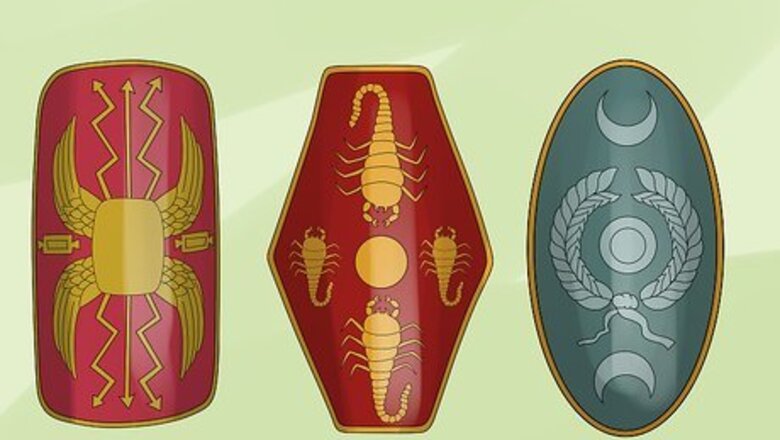
views
Crafting a Simple Cardboard Shield
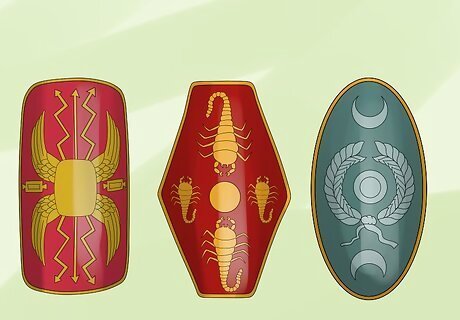
Decide on a shape for your shield. Pick a shape for your shield using images of Roman shields for inspiration. The most iconic scutums were rectangular with rounded edges, though circular and oval shields were used as well. The basic rectangular shield will probably be the best place to start—keep in mind that it will be more difficult to cut complex shapes and curved edges.
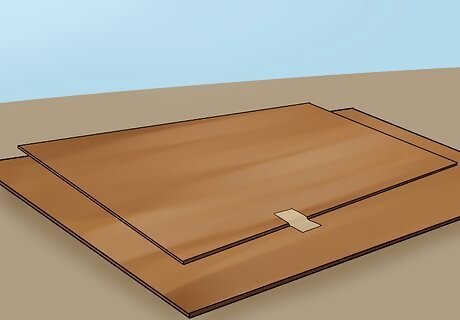
Find a large piece of cardboard. You'll need a single large sheet of cardboard to cut out the body of your shield. The cardboard should ideally be flat, so that the shield doesn't accidentally contain any part of the hinged box top, and big enough to cut out your shield in a single piece. Finding an unused cardboard shipping or appliance container may be your best best, or you can sometimes find measured single sheets of cardboard at craft stores. If you're having trouble finding a piece of cardboard big enough, check with some local businesses to see if they have any to give away. Places like post offices and grocery stores are often happy to get rid of surplus boxes. A refrigerator box would make an ideal base for the rectangular, body-length Roman shield.
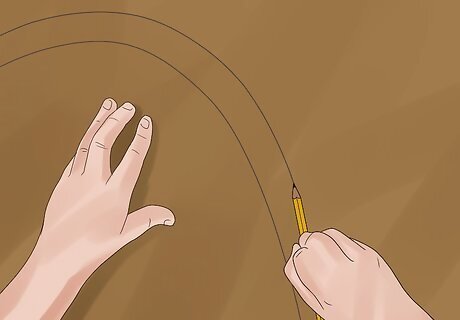
Sketch the outline of the shield onto the cardboard. Use a pencil to sketch out the desired shape of your shield on the cardboard. Make the outline slightly larger than the actual size you want your shield to be if you wish to fold and secure the edges later for a cleaner, more rounded finish. Go over the outline with a dark felt-tipped marker so that it's more visible when you begin cutting. If you'd rather, if you can sketch the outline of your shield onto a separate piece of posterboard or scrap of newspaper first, then cut this out and use it to trace around the cardboard for a more precise shape. To account for the folded edges of your shield, draw two concentric outlines on the cardboard, one about 2" larger around the smaller outline. You'll cut out the shield at the outer outline and fold it to the inner one.
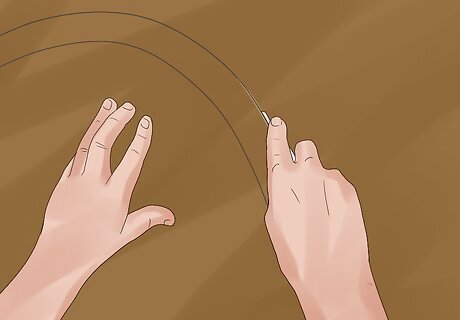
Carefully cut out the shield. Use an X-acto knife, box cutter or other straight cutting implement to cut out the outline of your shield. Go slowly and try to make the edges as precise as possible. Make sure you lay the cardboard on a surface safe for cutting, such as a crafting table. Take extreme caution when handling any cutting tool. Straight cutters are designed to be very sharp, and accidents can happen if you're not careful. Always cut in short, smooth motions and go slowly. You can use scissors if you have no other option, but the blades are not as sharp, and the pressure of them against the cardboard may cause it to crush and cut poorly.
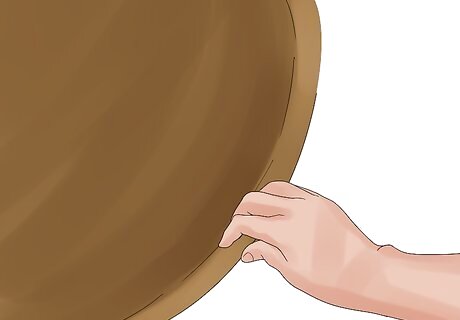
Cut and fold at the corners to "round out" the shield. Once you've cut out your basic shield shape, make another small cut of about 2" at each corner of the shield, or at intervals of around half a foot if you're creating a circular shield. Making these cuts will create "flaps" that you can then fold and tape down on the backside of the shield, giving the shield a thicker, rounded appearance. Remember to cut the outline of your shield several inches larger if you decide to fold the edges of the cardboard.
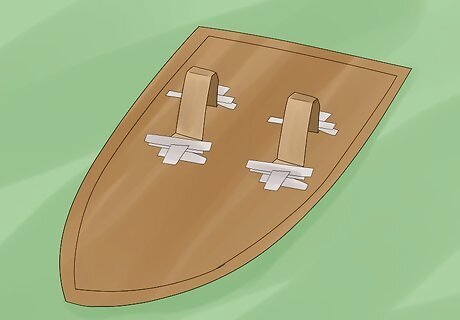
Cut out the handle and attach it to the shield. Using the cardboard you have remaining, cut out a thin rectangular section to serve as the handle on the backside of the shield. This piece should be 8–10 inches (20.3–25.4 cm) long and 2-3 inches wide to make sure that it's sturdy enough to stay in place. Bend the rectangular strip so that the handle is squared, with a short flap on either side to tape down against the shield. Use duct tape or another strong adhesive to attach the handle to the shield. If you wish, you can cut a second strip of cardboard to serve as a forearm strap, which will brace the shield against the forearm and allow you to control it better.
Making a Wooden Shield
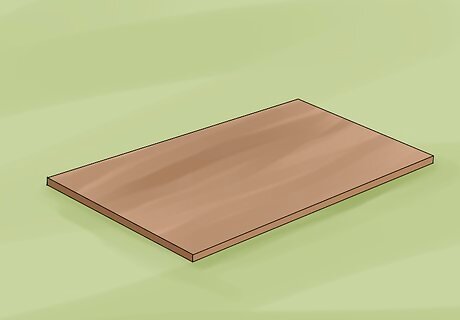
Find a broad, flat piece of wood. To make the body of the wooden shield, you'll need a single large wood board; the size and type of wood you use will depend largely on preference, although it was standard for the Roman shield to be about a foot shorter than its wielder and a few inches wider on either side. You can usually have wood cut to your specifications at home improvement stores like The Home Depot. Plywood is a cheaper option and will be useful if you intend to pad the shield for use in role playing activities. Assuming you don't want to spend the money to have a piece of wood cut specifically for your shield, you can visit a lumber yard or recycling center to salvage unused scrap wood for little or no cost. If you're unable to find a wood board large enough, piece together one of the right size using smaller individual pieces, like planks from a wooden pallet.
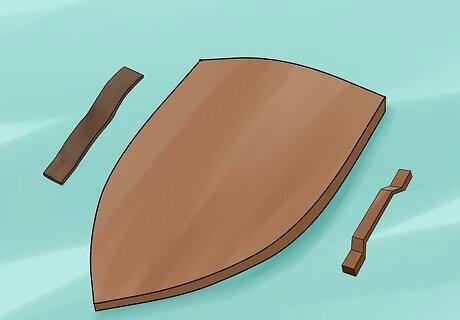
Acquire a handle to serve as a grip for the shield. Find handle that can be used to provide a grip for the back of the shield. A basic door handle, like those used on screened doors, will probably be your cheapest and most readily available option. You could also use a thick strip of leather, in addition to the handle, to craft a forearm strap. Make sure you have a set of wood screws and a basic screwdriver to attach the handle to the shield. A plain metal handle will look best in keeping with the appearance of the shield. Scrap leather can usually be bought in craft stores, or online. Cut the leather to the exact size you want for the strap. You will only need two wood screws, unless you decide to attach a leather forearm strap as well, in which case four will do the job.
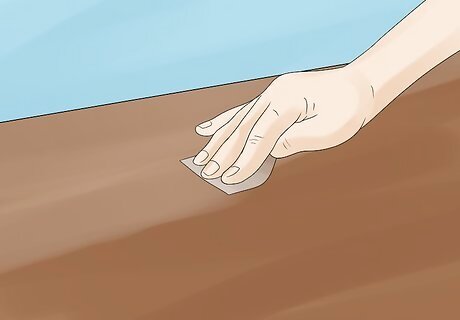
Check to see that the wood is smooth and uniform. Before you begin putting together the individual components of the shield, quickly inspect the wood board you're using for any imperfections. Splinters, cracks and uneven places can all compromise the integrity of the shield, and if untreated they can leave the shield with a rough, unappealing appearance. Take whatever measures necessary to ensure that the wood is smooth and symmetrical. Cracks or breaks in your wood board can be sealed using Epoxy.
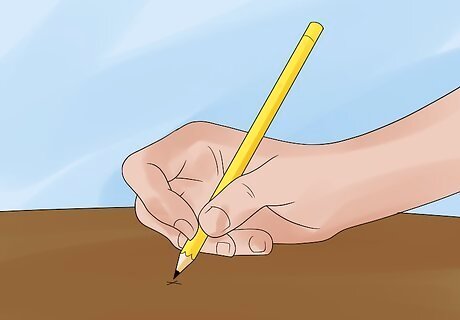
Center the handle on the back of the shield. Place the handle where you want it to go on the shield's back side. Centering the handle will give the shield the best balance and leverage for movement, but it can also go slightly to one side or the other if it suits your personal preference. Use a pencil to mark where the screws should go in the handle. Allow room for a strap. If you wish to add a leather forearm strap in addition to the handle, account for this in the layout on the back of the shield. Measure the distance from the thickest part of the forearm to the palm. If you're right-handed (which means you would carry the shield in your left hand), place the strap and handle the appropriate distance from one another in the center of the shield with the handle on the right. If you're left-handed, reverse this configuration. To center the handle and strap together, take a measurement of the total width of the shield and subtract your forearm-to-hand measurement from that, then divide this number in half to tell how you how much space you should have remaining on either side of the strap and handle once they're attached.
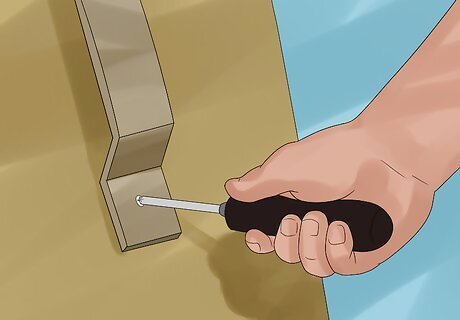
Screw the handle into the wood. Line the handle up with the markings you made for where the screws should go on the back of the shield. Hold the handle still (or tape it down, if necessary) while you insert a wood screw into the top hole in the handle and screw it into place. Do the same for the bottom hole, tightening both screws and making sure they're both straight and secure. If you're bolting the handle to the wood, use the paddle bit to bore about half an inch into the wood, then drill the rest of the way through and insert the bolt. Tighten with the socket head bit. Plywood and other lightweight pieces will likely be too thin to bolt successfully.
Decorating Your Shield
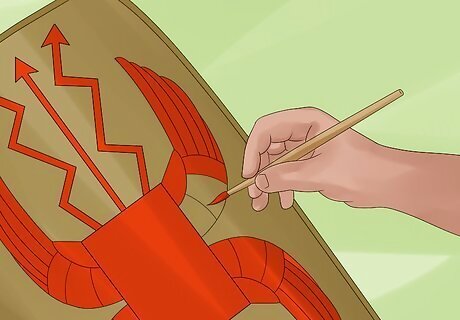
Paint on a design. Use craft paint (or acrylic paint if you're making a wooden shield) to brush an authentic Roman design onto your shield. Scour the internet or reference books on Roman military history to find inspiration for emblems and ornamentation. Some popular design elements are wings, griffins and leaf-like patterns. Print a template off the internet and make it a guide for a stencil you can use to spray paint your design on for a clean finish. Create your own original design in the same style as traditional Roman weapon-works for a personalized shield. Use painter's tape to help you paint precise lines and edges.
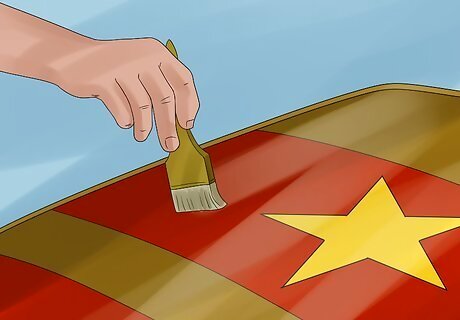
Brush some protective lacquer on wooden shields. Once you've got your shield assembled and painted, apply a thin coat of clear lacquer to the front side of the shield. This will protect both the wood and paint from smearing, cracking and peeling as a result of wear or water damage, as well as giving the shield a gleaming, polished finish. If you're making a padded shield, skip the lacquer and finish with a layer of clear acrylic primer. When applying lacquer or any chemical gloss, be sure to do so in an open, well-ventilated area, and wear a face mask if possible.
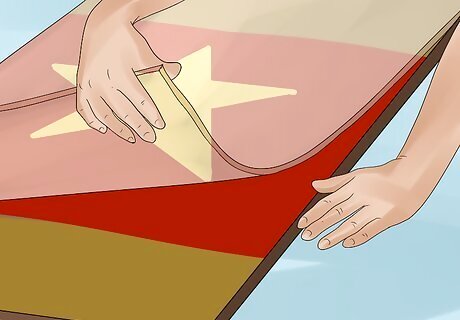
Add a protective layer of foam. For role playing activities, weapons and armor typically have to be approved for safe use. In this scenario, you'll need to apply a layer of foam padding to the shield so that the wooden surface is not exposed. Cut 1” wide strips of foam and glue them in a grid pattern the length and height of your shield, then glue a solid sheet of foam over the top. Draw the design of the shield directly onto the foam using acrylic paint. To increase the safety of your shield for recreational use, add a few strips of foam around the inner edge of the shield (the side you'll be on while holding it) to pad it against your own body.
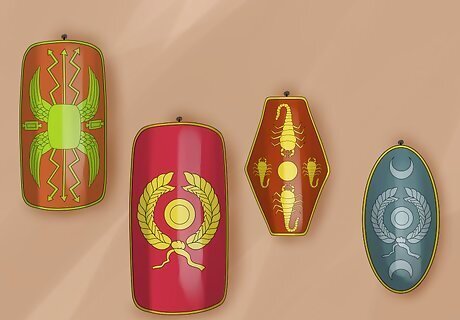
Prepare your shield for display. You're finished! You now have a solid, handmade replica Roman shield to wear to your next costume party or proudly show off. To mount your shield for display, attach a short length of framing wire to the back side of the shield and use a couple wall mounting hooks to hang it. Use your shield to adorn a bare section of wall in your home, or take a padded shield out for a spin at your next LARP event. If you plan to use your shield when it's not being displayed, find a place to attach the framing wire where it won't interfere with your grip.

















Comments
0 comment